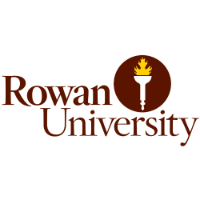
- Find Your College
- Scholarships
- Pay for College
-
Articles
- COLLEGES
- Most Recent
- Affordability & Cost
- College Search
- Comparisons
- College Majors & Minors
- Myths
- News & Trends
- Tips, Tools & Advice
- Admissions
- Most Recent
- ACT & SAT
- College Admissions
- College Applications
- Myths
- Online Colleges
- Questions & Answers
- About
- Home
- >
- Browse All Majors
- >
- Communication, Journalism, And Related Programs
- >
- Public Relations, Advertising, and Applied Communication
- >
- Sports Communication
Sports Communication
Select Type of Degree:
Select State:
|
#1

Rowan University
|
|||||||||||
|
#2

University of Nebraska-Lincoln
|
|||||||||||
|
#3

Ithaca College
|
|||||||||||
|
#4

Butler University
|
|||||||||||
|
#5

Bradley University
|
|||||||||||
|
#6

Siena College
|
|||||||||||
|
#7

Emerson College
|
|||||||||||
|
#8

Arizona State University Campus Immersion
|
|||||||||||
|
#9

Oklahoma State University-Main Campus
|
|||||||||||
|
#10

Susquehanna University
|
|||||||||||
|
*The estimated net prices above are College Raptor’s estimate. Please contact the college financial aid office for actual net cost figures.
|
|||||||||||
| Institution | Scaled Score | Acceptance Rate | Annual Degrees Awarded | SAT Score | Est. Net Price * | Median Starting Salary | Save | |
|---|---|---|---|---|---|---|---|---|
 University of Nebraska-Lincoln Lincoln, NE Every year, the University of Nebraska-Lincoln grants around 266 degrees to...view more | 100 | 77% | 57 | 1,110 - 1,320 | $18,029 | $56,093 | ||
 Ithaca College Ithaca, NY Each year, Ithaca College grants around 120 degrees to those majoring in...view more | 97 | 70% | 25 | 1,210 - 1,380 | $34,297 | $62,554 | ||
 Butler University Indianapolis, IN At Butler University, the most popular majors students study are...view more | 97 | 86% | 22 | 1,210 - 1,380 | $40,140 | $61,933 | ||
 Bradley University Peoria, IL Each year, Bradley University grants around 79 degrees to those majoring in...view more | 96 | 77% | 25 | 1,120 - 1,330 | $24,703 | $56,905 | ||
 Siena College Loudonville, NY Annually, Siena College grants around 87 degrees to those studying...view more | 88 | 71% | 16 | 1,110 - 1,360 | $32,602 | $59,761 | ||
 Arizona State University Campus Immersion Tempe, AZ Annually, Arizona State University Campus Immersion grants around 1185...view more | 81 | 90% | 120 | 1,090 - 1,320 | $16,401 | $49,428 | ||
 Oklahoma State University-Main Campus Stillwater, OK At Oklahoma State University-Main Campus, the most popular majors students...view more | 75 | 71% | 34 | 1,040 - 1,270 | $18,291 | $52,279 | ||
 Susquehanna University Selinsgrove, PA Every year, Susquehanna University awards about 49 degrees to those studying...view more | 74 | 79% | 8 | 1,100 - 1,310 | $27,258 | $60,943 | ||
 DePaul University Chicago, IL At DePaul University, the three most popular college majors students study...view more | 73 | 74% | 25 | 1,160 - 1,360 | $32,129 | $54,624 | ||
 St Bonaventure University Saint Bonaventure, NY Annually, St Bonaventure University grants around 44 degrees to students...view more | 71 | 82% | 6 | 1,070 - 1,280 | $27,659 | $58,847 |
*The estimated net prices above are College Raptor’s estimate. Please contact the college financial aid office for actual net cost figures.
About Sports Communication
A program that focuses on the methods and techniques for communicating about sports in a variety of formats, media, and contexts; and that prepares individuals to be sports reporters and writers, photojournalists, radio and television announcers, producers and directors, recreational sports promoters, and public relations specialists. Includes instruction in sports writing, photography, broadcast journalism, sports production, game rules, media and public relations, and sports promotion.
Arizona grants the most Bachelors degrees in Sports Communication of all US states with 120 degrees being awarded last year. Students wanting to major in Sports Communication can expect approximately 75% percent of their fellow classmates to be men and 25% percent to be women. Most students graduating in this field earn a Bachelors degree. The average starting salary for a graduate with a bachelor's degree in Sports Communication is $41,400.
Careers
Some top careers related to Sports Communication, include News Analysts, Reporters, and Journalists and Broadcast Announcers and Radio Disc Jockeys, both of which are in high demand. Yet there are higher paying careers, like Agents and Business Managers of Artists, Performers, and Athletes. the most in-demand position for Sports Communication majors is Public Relations Specialists.
Top Paying Careers
These are the highest paying careers for Sports Communication majors.
| Career | Median Salary | Average Annual Job Openings | Employment 2022 | Employment 2032 | % Change | |
|---|---|---|---|---|---|---|
| Agents and Business Managers of Artists, Performers, and Athletes | $84,900 | 1,039 | 9,850 | 10,642 | 8% | |
| Communications Teachers, Postsecondary | $79,910 | 431 | 5,174 | 5,359 | 4% | |
| Public Relations Specialists | $66,750 | 14,731 | 169,644 | 179,922 | 6% | |
| News Analysts, Reporters, and Journalists | $57,500 | 3,618 | 35,275 | 34,129 | -3% | |
| Broadcast Announcers and Radio Disc Jockeys | $44,890 | 1,111 | 12,963 | 11,482 | -11% |
Most In-Demand Careers
These are the careers in highest demand for Sports Communication majors.
Student Demographics




Subscribe to Our Newsletter
Join thousands of students and parents learning about finding the right college, admissions secrets, scholarships, financial aid, and more.

College Raptor, Raptor, InsightFA, FinanceFirst, and “The Right College. The Best Price.” are registered trademarks of College Raptor, Inc.


